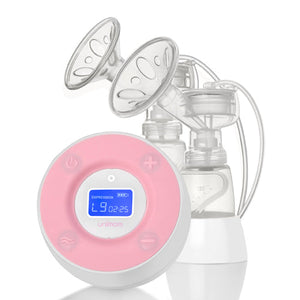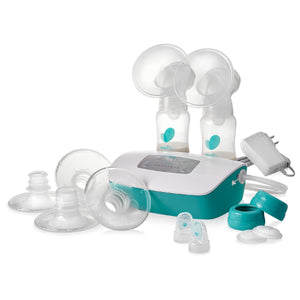Are you a breastfeeding mother who relies on a breast pump to express milk? If so, you know how important it is to properly care for your breast pump tubing to ensure its functionality. Knowing how to dry breast pump tubing is crucial to prevent mold and maintain optimal performance.
The cleanliness and efficacy of a breast pump depend on the regular upkeep of all its parts, including the tubing. To guarantee a sanitary and risk-free breastfeeding experience, we'll show you how to dry your breast pump tubing properly.
Moreover, Moovkart offers a variety of stable medical supplies, including premium tubing for breast pumps.
Drying Breast Pump Tubing
When drying breast pump tubing, following the manufacturer's instructions is crucial, as different brands and types of pumps may have varying recommendations.
Properly drying the tubing is essential to protect the pump motor and ensure longevity.
- Firstly, It’s better to disconnect the shields and bottles from the tube, however, make sure to leave the tubing to the pump connected.
- Next, you should run the pump for about 3-5 minutes to remove any condensation or moisture. This step is significant for closed-system pumps, as condensation can occur inside the tubing.
Remember, that cleaning the tube is only necessary if it gets any milk, debris, or other contaminants inside.
- Therefore, before cleaning disconnect the tubing from the power source and other parts.
- Rinse to clear all the debris
- Wash with warm soapy water and let it air dry
Remember, the impact of milk in the tubing depends on the brand and type of pump, so it's essential to check with the specific manufacturer for cleaning instructions.
How Long Does it Take for Breast Pump Tubing to Dry?
Be mindful about the time, as it takes a little while before you can use the pump for the next session after cleaning it out. The time frame for drying a pump can vary among various factors. These can include, brands, manufacturers or the humidity level of the room.
However, it might typically take 30 minutes to several hours for breast pump tubing to completely dry.
Here are some suggestions to quicken the drying process:
- Put the tubing in a place with good ventilation: The tubing can dry more quickly if it is hung in an area with sufficient airflow.
- Shake off excess moisture: Before hanging the tubing, gently shake it to remove any excess moisture or milk residue.
- Prevent placing the tubing in direct sunlight: Although it could be alluring, it's preferable to prevent causing damage and deterioration.
- If you’re ion a hurry, a cooling tool or a hairdryer set to low heat can help speed up the process.
- You should always have spare tubing on available so that you may keep pumping even if one set is drying.
4 Things To Do If water gets in the breast pump tubing?
If water accidentally enters your breast pump tubing, you may experience frustration and concern about the potential damage it could cause. However, it's essential to know that water in breast pump tubing is standard and can be quickly resolved.
It's critical to understand how to correctly dry breast pump tubing if you want to guarantee the security and efficiency of your pump. The actions that you should take are as follows:
1: Disconnect the tubing from the other parts and the power source.
- Rinse the tubing with warm soapy water to remove any residue.
- Wash the tubing with hot water to ensure thorough cleaning.
- Shake off any extra moisture, then let the tubing thoroughly air dry.
It's crucial to remember that heating the tubing is not advised because it can result in warping.
How To Sterilize Pump Parts In Boiling Water?
To sterilize your pump parts in boiling water, place them in a pot for the recommended time according to your specific breast pump manufacturer's instructions.
This method is a common and effective way to ensure your pump parts are thoroughly cleaned and bacteria-free.
When cleaning Medela tubing, it's important to note that you shouldn't boil them. Boiling the tubing can cause it to warp, rendering it ineffective.Instead, disconnect the tube from the other components and power supply and rinse it to get rid of any lingering debris.
What does mold in breast pump tubing look like
Moldy tubing can be easily identified by its dark, fuzzy appearance, resembling a science experiment gone wrong. When mold grows in breast pump tubing, it can risk your and your baby's health.
It is essential to regularly inspect your tubing for any signs of mold and take immediate action if you find any. Mold in breast pump tubing can occur due to moisture or milk residue that remains unclean.
After each time you pump, make sure the tubing is completely dry to avoid mould formation.
Unplug the conduit from the other parts and the power source for getting rid of any leftover residue.
Then, wash it in hot soapy water, more hot water to rinse it, and finally, let it dry in the air.
Conclusion:
Safeguarding mother and child from mould and germs by drying the breast pump tubing completely is a matter of good hygiene. If you follow the advice in this manual, you are able to maintain your breast pump clean as well as in good operating order.
In addition, Moovkart is a great place for expectant mothers to find helpful items like breast pumps.
FAQs
Can I use a hairdryer to dry breast pump tubing?
Yes, you can as long as you make sure to disconnect the tubing from the parts and be very careful while handling a hairdryer.
Can I use a towel to dry the breast pump tubing?
How often should I replace breast pump tubing?
It would be best to replace the breast pump tubing every 3 to 6 months or as the manufacturer recommends. Regularly inspect the tubing for signs of wear, tears, or mold. Proper maintenance and replacement ensure optimal hygiene and performance.
Can I use a dishwasher to clean breast pump tubing?
No, using a dishwasher to clean breast pump tubing is not recommended. Cleaning tubing should be done by hand using warm soapy water, rinsing with hot water, and allowing it to air dry.








